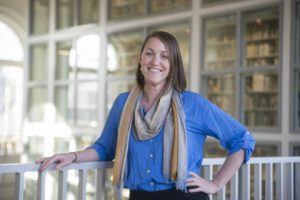by Michelle Slater
The British Museum is a world renowned institution known for its rich history of collecting antiquities and priceless works of art from around the world. The Museum is open year-round for free to visitors in London, but …

Featuring profiles of outreach & advocacy in cultural heritage
by Michelle Slater
The British Museum is a world renowned institution known for its rich history of collecting antiquities and priceless works of art from around the world. The Museum is open year-round for free to visitors in London, but …
by Thera Webb
The Digital Prison Archive is an outreach project for the Prison Public Memory Project, an organization that currently focuses on collecting and archiving stories and experiences from people connected to the three prisons in Hudson New York …
by Caroline Tanski
On May 1st, 1718, the Mission San Antonio de Valero (which would come to be known as the Alamo) was founded, and along with it the city of San Antonio, Texas. While activities will culminate …
by Rebecca Sasseville
There’s no avoiding the power of social media for a cultural heritage institution. It’s free and easy to use for accounts and followers alike. Social media is used by all walks a life, everywhere in the world. …
by Caroline Tanski
As the story often goes, Felicia Williamson didn’t intend to be an archivist. She studied German and European history and pursued historical research through a Fulbright scholarship in Austria. She took a student job in circulation at …
by Ayoola White
Spencer Keralis is in love with metadata. He blogs, he emails, he evangelizes his department to a variety of academic disciplines at his university. He is the Head of the Digital Humanities and Collaborative Programs Unit at …
by Elena Hoffenberg

Caitlin Birch combines her academic training as a historian and professional archival expertise in digital forms as the Digital Collections and Oral History Archivist at Rauner Special Collections Library at Dartmouth College. Birch completed her MLIS and …
Welcome to LIS 476, Spring ’18!
We’ll be launching a new series of our Professional Profiles starting in early March. Each profile will feature an archivist or cultural heritage professional working in innovative and impactful ways to connect communities to …
Thanks dedicated readers and participants. The SLIS476 blog Archives Unboxed is now wrapping up for the Fall 2017 season. Stay tuned for more posts and cultural heritage projects coming in Spring 2018.
I will also be turning the reigns over …